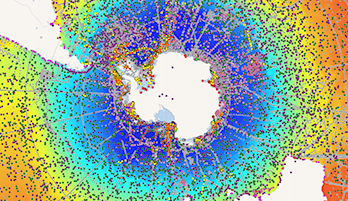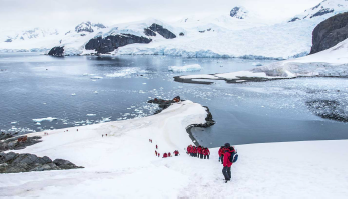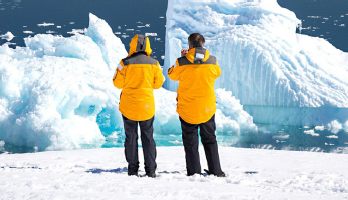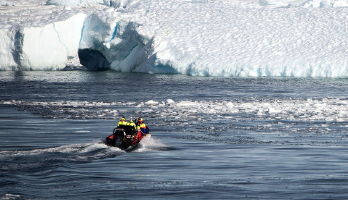At the opposite end of the food chain, scientists studied ocean predators, including Weddell seals, Emperor penguins, Adélie penguins, and killer whales. Research focused on where the animals travel, how deep they dive, and what they are eating. These data will help with understanding how effective the recently established Ross Sea region Marine Protected Area (MPA) is.
There were also a number of long-term monitoring surveys carried out during the season, including the annual aerial census of Adélie penguins on Ross Island. High resolution photographs were taken from a helicopter and later analysed to determine the total number of breeding pairs. These aerial surveys began in the 1980s, and the long-term record of Adélie penguin abundance and distribution provides an important baseline for research and monitoring associated with the Ross Sea region MPA.
Later in the season, the annual Antarctic toothfish survey was carried out from aboard the FV San Aotea II, contributing to a record that began in 2012. The results of the survey help with sustainable management of the toothfish fishery as well as informing how effective the Ross Sea region MPA is in terms of achieving its conservation objectives.












